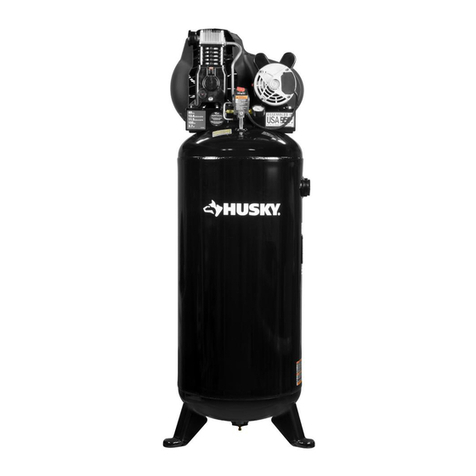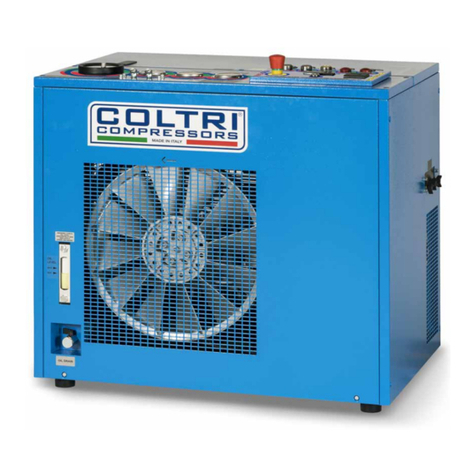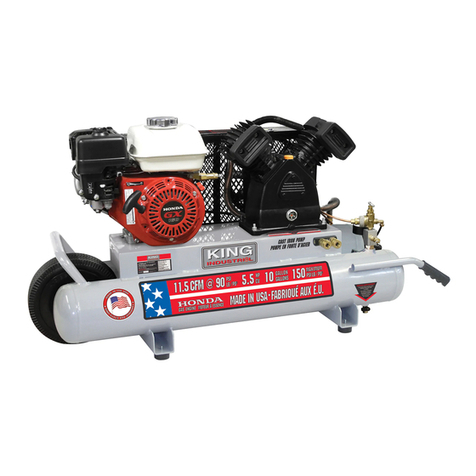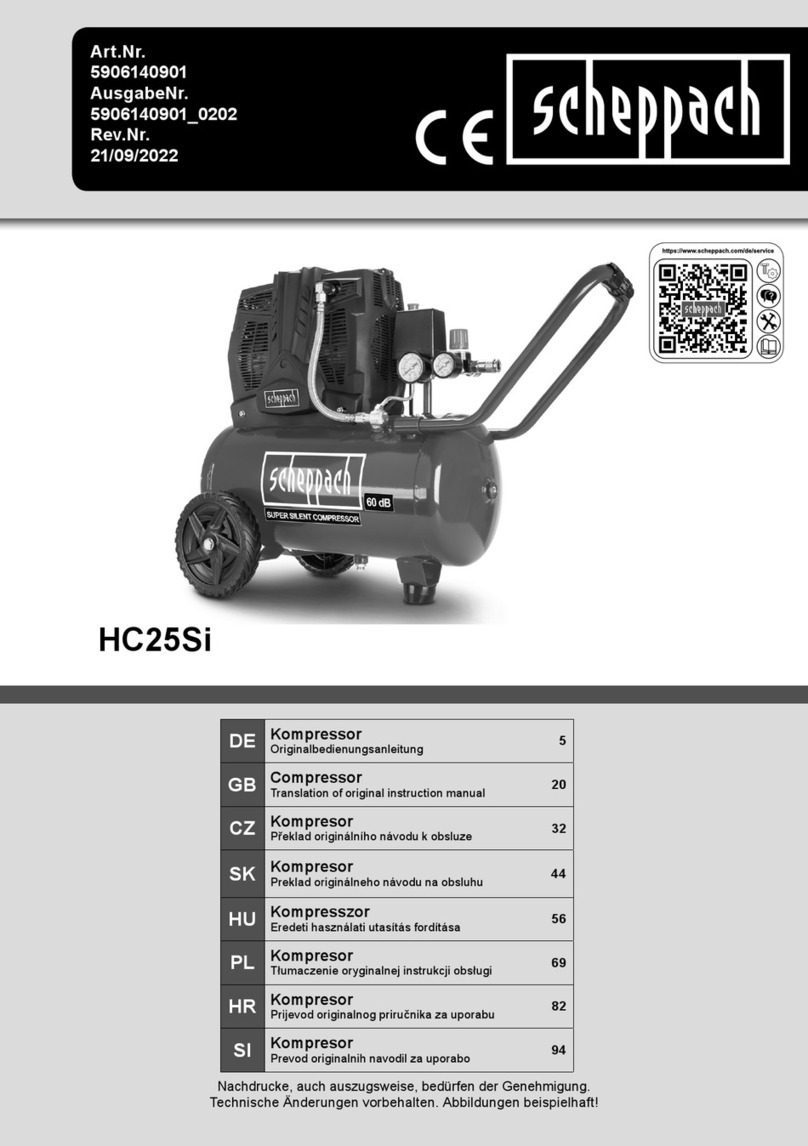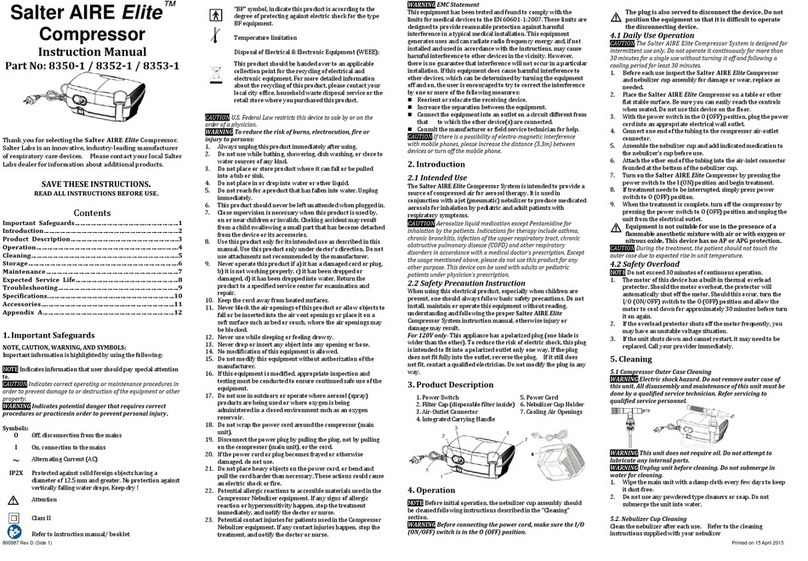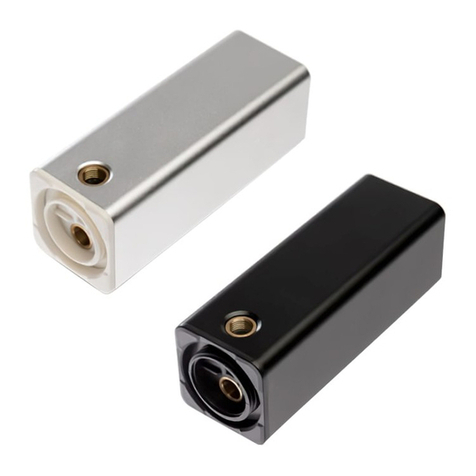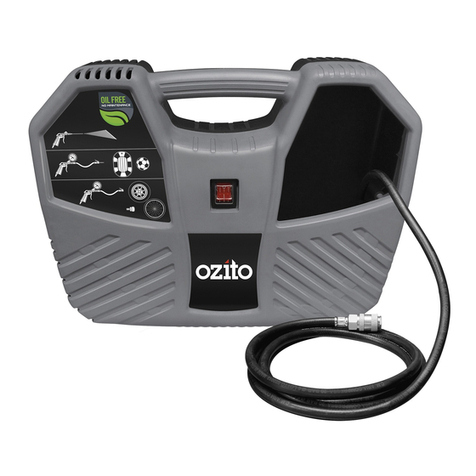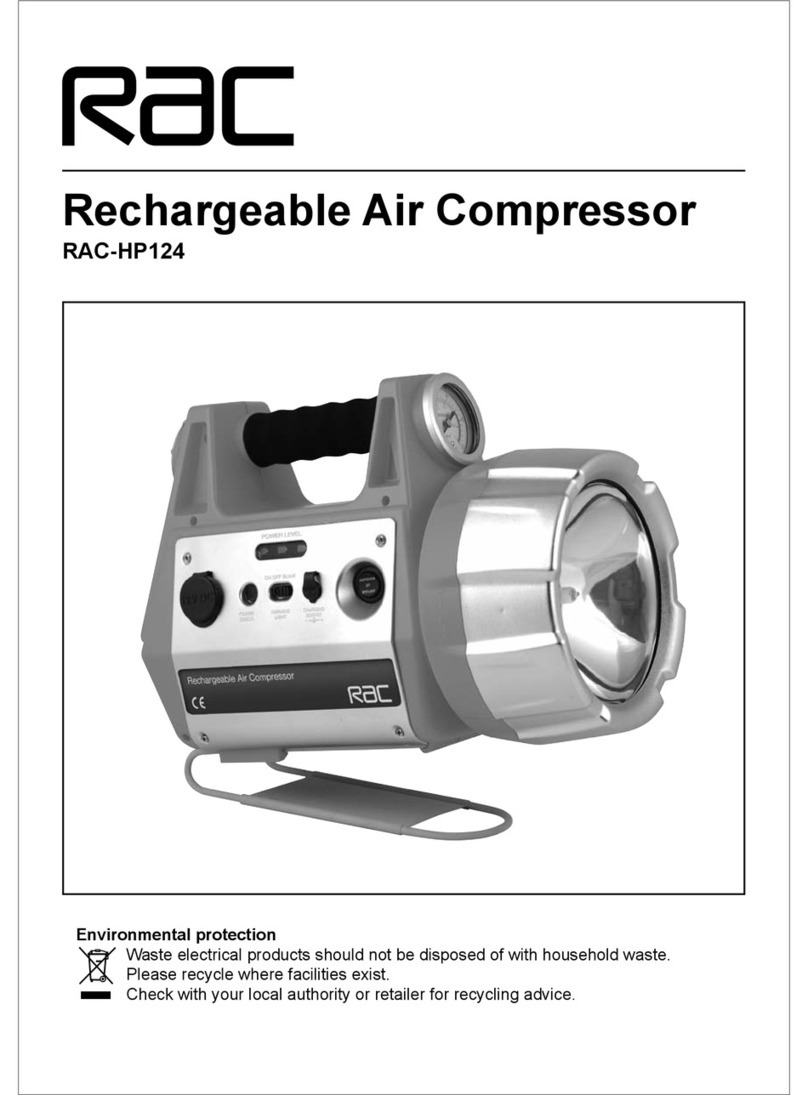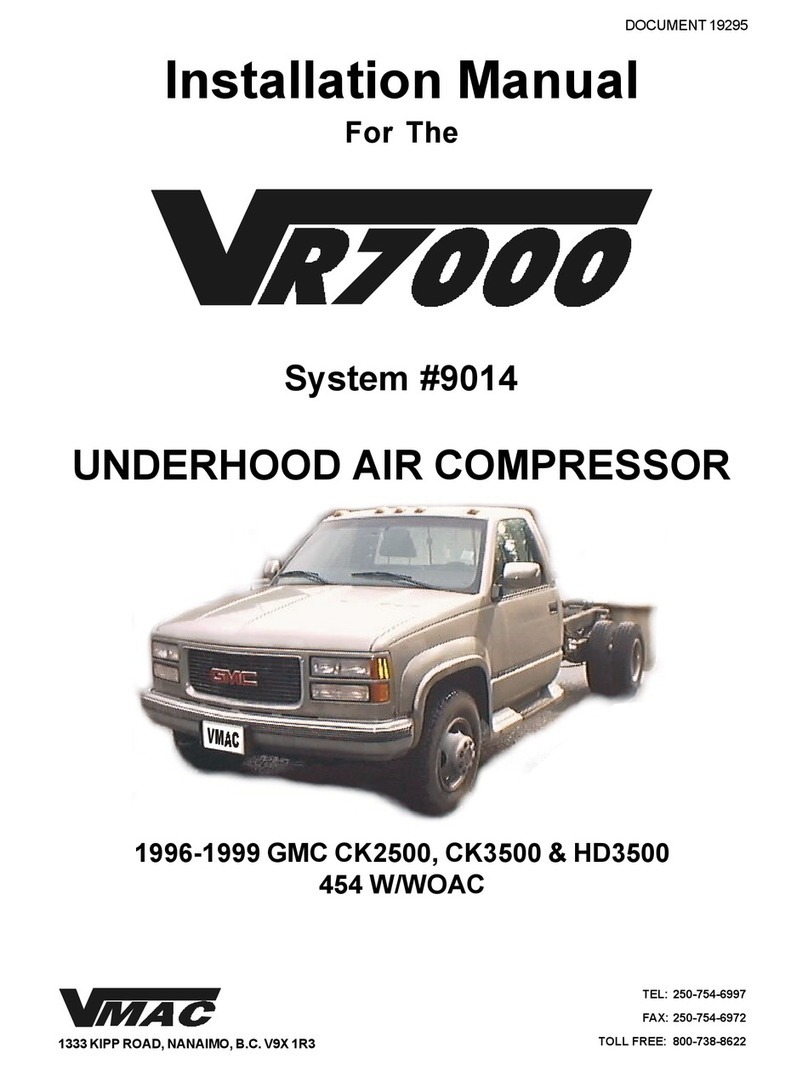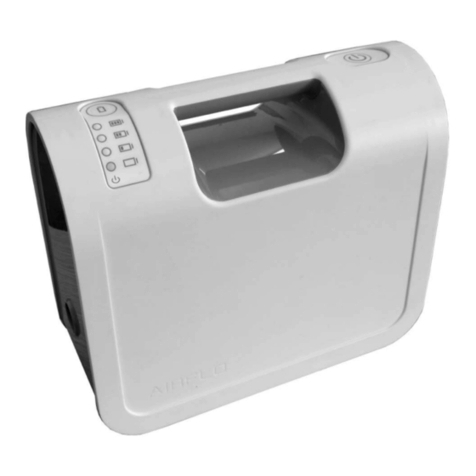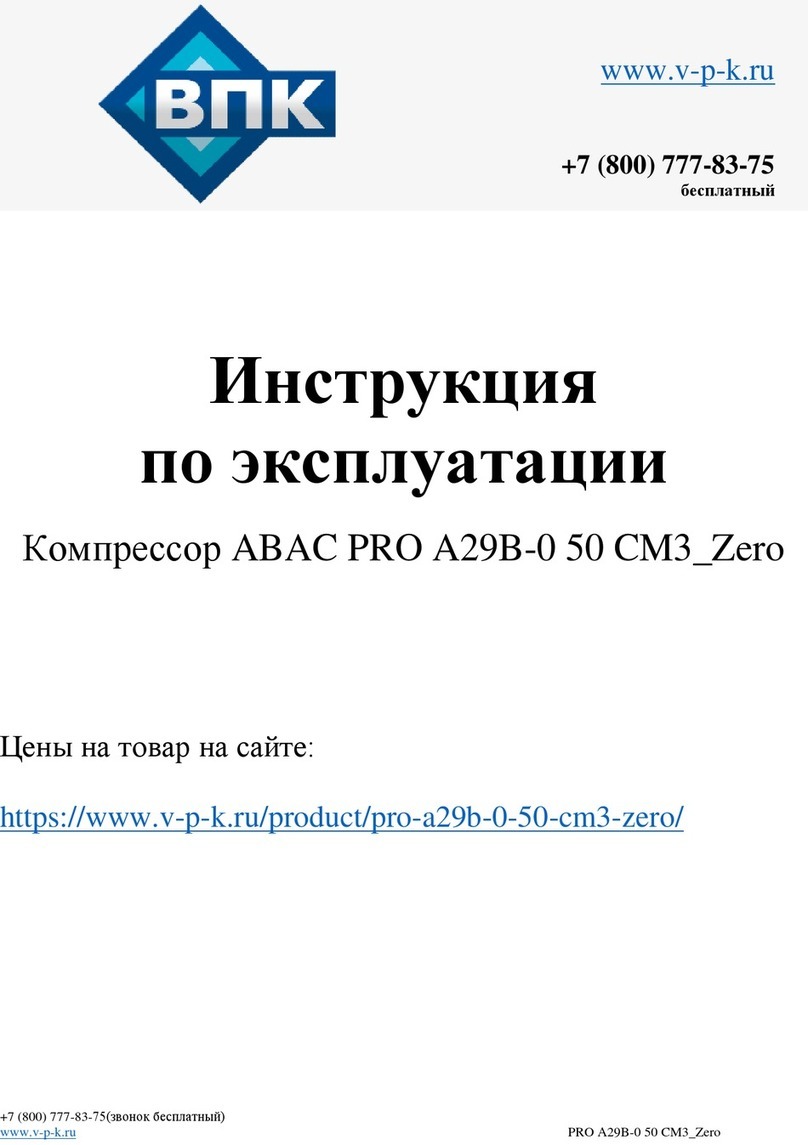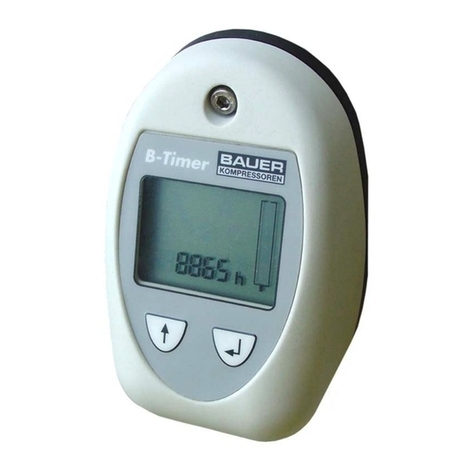Eurotech CTR-1475 User manual

CT
R
-
147
5
Rev. 1.1 - January 2008 - ETH_CTR-1475_USM11-2008-01
User Manual

2 Introduction
CTR-1475 User Manual
Disclaimer
The information in this manual has been carefully checked and is believed to be accurate. Eurotech assumes no
responsibility for any infringements of patents or other rights of third parties, which may result from its use.
Eurotech assumes no responsibility for any inaccuracies that may be contained in this document. Eurotech makes no
commitment to update or keep current the information contained in this manual.
Eurotech reserves the right to make improvements to this document and/or product at any time and without notice.
Warranty
This product is supplied with a limited warranty. The product warranty covers failure of any Eurotech manufactured
product caused by manufacturing defects. Eurotech will make all reasonable effort to repair the product or replace it with
an equivalent alternative. Eurotech reserves the right to replace the returned product with an alternative variant or an
equivalent fit, form and functional product. Delivery charges will apply to all returned products.
Trademarks
All trademarks, both marked and not marked, appearing in this document are the property of their respective owners.
WEEE
The information below is issued in compliance with the regulations as set out in the 2002/96/CE directive, subsequently
superseded by 2003/108/CE. It refers electrical and electronic equipment and the waste management of such products.
When disposing of a device, including all of its components, subassemblies and materials that are an integral part of the
product, you should consider the WEEE directive.
This symbol has been attached to the equipment or, if this has not been possible, on the packaging,
instruction literature and/or the guarantee sheet. By using this symbol, it states that the device has been
marketed after August 13th 2005, and implies that you must separate all of its components when possible,
and dispose of them in accordance with local waste disposal legislations.
• Because of the substances present in the equipment, improper use or disposal of the refuse can
cause damage to human health and to the environment.
• With reference to WEEE, it is compulsory not dispose of the equipment with normal urban refuse,
arrangements should be instigated for separate collection and disposal.
• Contact your local waste collection body for more detailed recycling information.
• In case of illicit disposal, sanctions will be levied on transgressors.
RoHS
This device, including all it components, subassemblies and the consumable materials that are an integral part of the
product, has been manufactured in compliance with the European directive 2002/95/EC known as the RoHS directive
(Restrictions on the use of certain Hazardous Substances). This directive targets the reduction of certain hazardous
substances previously used in electrical and electronic equipment (EEE).
© 2007 Eurotech Spa
Eurotech S.p.A.
A member of the Eurotech Group
Via Fratelli Solari, 3/a
33020 - AMARO (UD)
ITALY

Introduction 3
CTR-1475 User Manual
Introduction
Manual Conventions
The following conventions are used throughout this manual.
The “Mode” of the register:
Symbol / Text Definition
RW Readable and Writable register
RO Read only register
W Meaning of the register when written
R Meaning of the register when read
Hexadecimal numbering:
Hexadecimal numbers are indicated with an “h” suffix (for example: 11Ch)
Symbols and Text used in Pin-out tables:
Symbol / Text Definition
◄Input
►Output
◄► Bi-Directional
▬Passive
Module specific Dependent on module installed
NC Not Connected
Reserved Use reserved to Eurotech, must remain unconnected
# Active low signal
Pass-thru signal: not used by the board described in this manual
Warnings and Important Notices:
Within this manual you will find the following tables, please ensure that you read and understand these as
they are intended to highlight potential risks or precautions that should be taken.
Warnings:
Information to alert you to potential hazards:
Potential personal injury or damage to a system, device or program.
Information notes:
Indicates important features or instructions that should be observed

4 Introduction
CTR-1475 User Manual
Technical Assistance
If you have any technical questions or if you cannot isolate a problem with your device, please e-mail the
RMA Requests
Before returning any Eurotech product, for any reason, you must e-mail the Eurotech Technical Support
Team on the above email address, giving the following information; you will then be sent an RMA number
(Returned Material Authorization) for the return of the material:
• Model number (see Figure 1)
• Serial number (see Figure 1)
• Detailed fault description
• Company Details
• Contact details
Transportation
When transporting any module or system, for any reason, it should be packed using anti-static material and
placed in a sturdy box with enough packing material to adequately cushion it.
Warnings:
Any product returned to Eurotech that is damaged due to inappropriate packaging will
not be covered by the warranty!
Board labelling
On the external side of the ISA Bus connector, you will find several labels displaying the following:
• Batch Number
• Serial Number
• Model Number
• Hardware Revision
Note:
The actual location of these labels may vary depending on the product purchased.
For example: If no ISA bus is present, the PCI bus may be used instead.
However, the labelling formats will remain the same.
Model Number Hardware Revision
Serial Number
Batch Number
Figure 1. Board label locations

Table of Contents
Introduction...................................................................................................................................................... 3
Manual Conventions.......................................................................................................................................... 3
Technical Assistance......................................................................................................................................... 4
RMA Requests................................................................................................................................................... 4
Transportation.................................................................................................................................................... 4
Board labelling................................................................................................................................................... 4
Table of Contents ............................................................................................................................................ 5
Chapter 1 ...................................................................................................................... 7Product Overview
Product Definition .............................................................................................................................................. 8
Electrical and Environmental Specifications...................................................................................................... 9
Operating Characteristics ........................................................................................................................................ 9
Absolute Maximum Ratings ..................................................................................................................................... 9
Chapter 2 ................................................................................................................. 11Jumper Description
Jumper Layout and Configuration ................................................................................................................... 11
Chapter 3 ............................................................................................................ 13Connector Description
Connector Layout ............................................................................................................................................ 13
How to connect the CTR-1475 with other PC/104 & PC/104-Plus devices: the stack assembly.................... 14
J1 and J2: the ISA Bus.................................................................................................................................... 15
J3: PCI Bus...................................................................................................................................................... 17
J4: Composite Video IN................................................................................................................................... 18
J5: Video OUT and Monitor OUT .................................................................................................................... 19
J6: Audio IN..................................................................................................................................................... 20
J7: GPIO.......................................................................................................................................................... 21
Chapter 4 ................................................................................................................................... 23Appendix
A.1. ........................................................................................................................ 23Mechanical Dimensions
A.2. ....................................................................................................................... 24Manual Revision History

(This page is intentionally left blank.)

CTR-1475 User Manual
Chapter 1 Product Overview
The CTR-1475 is a real-time MPEG-4 video compressor, encoder and frame grabber module designed to
capture up to four concurrent high-quality analog video and audio streams, encode them in compressed
MPEG-4 or AVI formats, and send them to an embedded computer over the 32-bit PCI bus.
In the following paragraphs, you will find a brief description of the CTR-1475 characteristics.
For a complete list of our products please go to our web site: http://www.eurotech.it/

8 Product Overview
Product Definition
Encoding Processor:
Integrated RISC Microcontroller
(To offload compression overhead from system CPU)
Video Input:
4 Analog Video Input Channels
(Up to 16 concurrent cameras can be supported with four CTR-1475 in a single PC/104-Plus stack)
Video Output (Analog):
1 Analog Video Output Channel
(For Monitoring)
Audio Input:
4 Audio Input Channels
(PCM, ADPCM Audio Compression)
Video Quality Control:
Programmable Quantization Values - Picture Size, Position, Panning, Tilting, Freeze
Bit Rate Control:
Supports Variable Bit Rate (VBR), Constant Bit Rate (CBR) and Hybrid Bit Rate (HBR)
General Purpose Digital I/O:
CTR-1475 User Manual
8 Digital I/O Channels

Product Overview 9
CTR-1475 User Manual
Electrical and Environmental Specifications
Operating Characteristics
Electrical Operating Characteristics
Power supply • +5V dc +/- 5%
Power consumption • 7W typical
• 10 W maximum
Analog video input • 1V typical (nominal value)
• Termination impedance: 75 Ohm
Analog video output • 1.25V typical (nominal value)
• Termination impedance: 75 Ohm
Analog Audio input • 1V
Operating Temperature Range
For correct operation of the module, the ambient air temperature must remain within the following range:
Standard • Minimum +0 °C
• Maximum +60 °C
Extended (optional) • Minimum -40 °C
• Maximum +85 °C
Absolute Maximum Ratings
Supply Voltage: 0.00 to 5.50V
Storage Temperature Range: -40°C to +85°C
Non-Condensing Relative Humidity: <95% at 40°C
Warning:
Stressing the device beyond the “Absolute Maximum Ratings” may cause permanent damage.
These are stress ratings only. Operation beyond the “Operating Conditions” is not recommended.
Extended exposure beyond the “Operating Conditions” may affect device reliability

(This page is intentionally left blank.)

Chapter 2 Jumper Description
Jumper Layout and Configuration
Jumpers are shown as JP followed by its designated number.
Six 2-pin jumpers are located on the module. They can be set as follows:
• Pin 1 connected to pin 2 (which will be indicated as ‘Closed’)
• Pin 1 and pin 2 not connected (which will be indicated as ‘Open’)
JP1 JP2
JP6
JP5
JP4
JP3
Figure 2. Jumper layout
JP# TYPE FUNCTION DEFAULT
JP1 JP2 PCI Selection Slot:
Closed Closed Slot 0
Open Closed Slot 1
Closed Open Slot 2
JP1-2 2 pin
jumper
Open Open Slot 3
JP1 and JP2 Closed
JP3 2 pin
jumper
AUDIO IN1 - Microphone polarization
• Closed: Polarization Enabled
• Open: Polarization Disabled Open
JP4 2 pin
jumper
AUDIO IN2 - Microphone polarization
• Closed: Polarization Enabled
• Open: Polarization Disabled Open
JP5 2 pin
jumper
AUDIO IN3 - Microphone polarization
• Closed: Polarization Enabled
• Open: Polarization Disabled Open
JP6 2 pin
jumper
AUDIO IN4 - Microphone polarization
• Closed: Polarization Enabled
• Open: Polarization Disabled Open
Table 1. Jumper Functions
CTR-1475 User Manual

(This page is intentionally left blank.)

Chapter 3 Connector Description
Connector Layout
Connectors are shown as Jfollowed by its designated number and a red pad indicates pin 1.
GPIO
J7
1
1
C0
D0
B1
A1
1
1
Video OUT
Monitor OUT
Video IN
Audio IN
J5
J4
J6
J1, J2
J3
PCI BUS
1
Figure 3. Connector layout
Connector # Function Qty of pins Format Pitch (mm)
J1 ISA Bus 64 PC104: 32x2 2.54
J2 ISA Bus 40 PC104: 20x2 2.54
J3 PCI Bus 120 PC104PLUS: 30x4 2.00
J4 Video IN 10 HE14 5X2
polarized with retain 2.54
J5 Video OUT, Monitor OUT 10 HE14 5X2
polarized with retain 2.54
J6 Audio IN 10 HE14 5X2
polarized with retain 2.54
J7 GPIO 20 Pinstrip 10X2 2.00
Table 2. Connector Functions
CTR-1475 User Manual

14 Connector Description
How to connect the CTR-1475 with other PC/104 & PC/104-Plus
devices: the stack assembly
The ISA and PCI bus connectors of the module are designed to allow it to be connected with other PC/104
and/or PC/104-Plus devices, we recommend users to follow this procedure to ensure that stacked modules are
not damaged.
Warning:
Appropriate ESD (Electro Static Discharge) precautions should be used for the following
procedure.
1. Turn off the power to the PC/104 (or PC/104-Plus) system or stack.
2. Select and install standoffs as required to correctly position the module on the PC/104 stack.
3. Remove the module from its anti-static bag.
4. Check that keying pins in the bus connector are correctly positioned.
5. Check the stacking order; make sure an XT bus card will not be placed between two AT bus cards or it
will interrupt the AT bus signals.
6. Hold the module by its edges and orient it so that the bus connector pins line up with the matching
connector on the stack.
7. Press the module evenly onto the PC/104 stack.
Figure 4 shows a typical module stack with two PC/104 modules, one PC/104 16-BIT module, and one PC/104
8-BIT module.
The maximum number of modules is four in addition to the Host Board.
0.6 in. (15mm) Spacers (4 plcs.)
Stackthrough
8-bit module 0.435 in. (11 mm)
0.6 in. (15 mm)
Stackthrough
16-bit module
Stackthrough
PC/104Plus module
Non-Stackthrough
PC/104Plus module
0.6 in. (15mm) Spacers (4 plcs.)
0.6 in. (15mm) Spacers (4 plcs.) 0.100 in. (2.54 mm) 0.062 in. (1.57 mm)
Figure 4. The Module Stack
Warning:
Do not force the module onto the stack! Wiggling the module or applying too much pressure may
damage it. If the module does not readily press into place, remove it, check for bent pins or out-of-
place keying pins, and try again.
CTR-1475 User Manual

Connector Description 15
CTR-1475 User Manual
J1 and J2: the ISA Bus
Connectors J1 and J2 carry the signals for the ISA Bus. The ISA Bus is only used to convey signals to/from
boards above or below the CTR-1475. No physical connections are made to the CTR-1475 circuitry.
These signals match the definitions of the IEEE P996 standard.
J2
J1
Figure 5. ISA BUS layout
According to the PC/104 specifications, these connectors include KEY pins; these are filled holes in the female
side and missing pins on the male side of a connector, to avoid the wrong insertion in/of another module.
Pin # Row A Signal Pin # Row B Signal
1 IOCHK# 1 GND
2 SD7 2 RESET
3 SD6 3 +5V
4 SD5 4 IRQ9
5 SD4 5 -5V
6 SD3 6 DRQ2
7 SD2 7 -12V
8 SD1 8 SRDY#
9 SD0 9 +12V
10 IOCHRDY 10 NC KEY
11 AEN 11 SMEMW#
12 SA19 12 SMEMR#
13 SA18 13 IOW#
14 SA17 14 IOR#
15 SA16 15 DACK3#
16 SA15 16 DRQ3
17 SA14 17 DACK1#
18 SA13 18 DRQ1
19 SA12 19 REFRESH#
20 SA11 20 BCLK
21 SA10 21 IRQ7
22 SA9 22 IRQ6
23 SA8 23 IRQ5
24 SA7 24 IRQ4
25 SA6 25 IRQ3
26 SA5 26 DACK2#
27 SA4 27 TC
28 SA3 28 BALE
29 SA2 29 +5V
30 SA1 30 OSC
31 SA0 31 GND
32 GND 32 GND
Figure 6. J1 connector pinout

16 Connector Description
Pin # Row D Signal Pin # Row C Signal
1 GND 1 GND
2 MEMCS16# 2 SBHE#
3 IOC16# 3 LA23
4 IRQ10 4 LA22
5 IRQ11 5 LA21
6 IRQ12 6 LA20
7 IRQ15 7 LA19
8 IRQ14 8 LA18
9 DACK0# 9 LA17
10 DRQ0 10 MEMR#
11 DACK5# 11 MEMW#
12 DRQ5 12 SD8
13 DACK6# 13 SD9
14 DRQ6 14 SD10
15 DACK7# 15 SD11
16 DRQ7 16 SD12
17 +5V 17 SD13
18 MASTER# 18 SD14
19 GND 19 SD15
20 GND 20 NC KEY
Figure 7. J2 connector pinout
Note:
For further information regarding the ISA and PCI bus, please visit the Eurotech
website (http://www.eurotech.it/), referring to the section titled “Industry Standards”.
CTR-1475 User Manual

Connector Description 17
CTR-1475 User Manual
J3: PCI Bus
Connector J3 carries signals of the PCI Bus. The PCI Bus mechanical interface is a stackable 30x4 header.
This interface carries all of the required PCI signals per PCI Local Bus Specification Version. 2.1.
PCI Bus
J3
Figure 8. PCI BUS layout
Pin A B C D
1 GND Reserved +5 AD00
2 VI/O AD02 AD01 +5V
3 AD05 GND AD04 AD03
4 C/BE0# AD07 GND AD06
5 GND AD09 AD08 GND
6 AD11 VI/O AD10 M66EN
7 AD14 AD13 GND AD12
8 +3.3V C/BE1# AD15 +3.3V
9 SERR# GND Reserved PAR
10 GND PERR# +3.3V Reserved
11 STOP# +3.3V LOCK# GND
12 +3.3V TRDY# GND DEVSEL#
13 FRAME# GND IRDY# +3.3V
14 GND AD16 +3.3V C/BE2#
15 AD18 +3.3V AD17 GND
16 AD21 AD20 GND AD19
17 +3.3V AD23 AD22 +3.3V
18 IDSEL0 GND IDSEL1 IDSEL2
19 AD24 C/BE3# VI/O IDSEL3
20 GND AD26 AD25 GND
21 AD29 +5V AD28 AD27
22 +5V AD30 GND AD31
23 REQ0# GND REQ1# VI/O
24 GND REQ2# +5V GNT0#
25 GNT1# VI/O GNT2# GND
26 +5V CLK0 GND CLK1
27 CLK2 +5V CLK3 GND
28 GND INTD# +5V RST#
29 +12V INTA# INTB# INTC#
30 -12V REQ3# GNT3# GND
Table 3. J3 connector pinout
Note:
For further information regarding the ISA and PCI bus, please visit the Eurotech
website (http://www.eurotech.it/), referring to the section titled “Industry Standards”.

18 Connector Description
J4: Composite Video IN
By using connector J4, the CTR-1475 module offers the possibility to add a video composite input,
from up to four NTSC, PAL and SECAM video format cameras, to a PC/104-Plus system.
Analog Video Input
Electrical characteristics • 1V typical (nominal value)
• Termination impedance: 75 Ohm
2
1
Video IN
J4
Figure 9. J4 Connector
PIN# SIGNAL SIGNAL PIN#
1 Reserved GND 2
3 Video IN4 GND 4
5 Video IN3 GND 6
7 Video IN2 GND 8
9 Video IN1 GND 10
Table 4. J4 Pinout
Information notes:
Please refer to the Technical Datasheet Td0022 for further information about the cable
set that can be used.
CTR-1475 User Manual

Connector Description 19
CTR-1475 User Manual
J5: Video OUT and Monitor OUT
The J5 connector features four analog video outputs that can only be used for testing the signals coming
from the cameras.
J5 also features an analog monitor video out that allows monitoring the sequence that is going to be
recorded.
Analog Video Output
Electrical characteristics • 1.25V typical (nominal value)
• Termination impedance: 75 Ohm
Video OUT
Monitor OUT
J5
2
1
Figure 10. J5 Connector
PIN# SIGNAL SIGNAL PIN#
1 Monitor OUT GND 2
3 Video OUT4 GND 4
5 Video OUT3 GND 6
7 Video OUT2 GND 8
9 Video OUT1 GND 10
Table 5. J5 Pinout
Information notes:
Please refer to the Technical Datasheet Td0022 for further information about the cable
set that can be used.

20 Connector Description
J6: Audio IN
J6 allow the connection of up to 4 mono audio inputs.
Analog Video Output
Electrical characteristics 1V
2
1
Audio IN
J6
Figure 11. J6 Connector
PIN# SIGNAL SIGNAL PIN#
1 NC GND 2
3 Audio IN1 GND 4
5 Audio IN2 GND 6
7 Audio IN3 GND 8
9 Audio IN4 GND 10
Table 6. J6 Pinout
CTR-1475 User Manual
Table of contents


